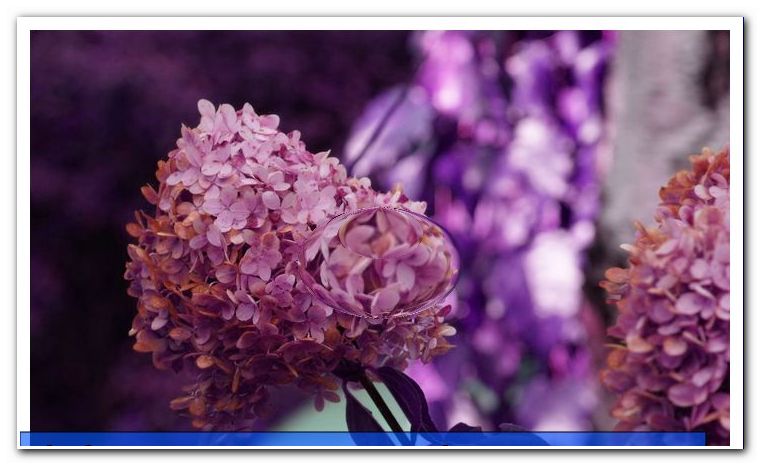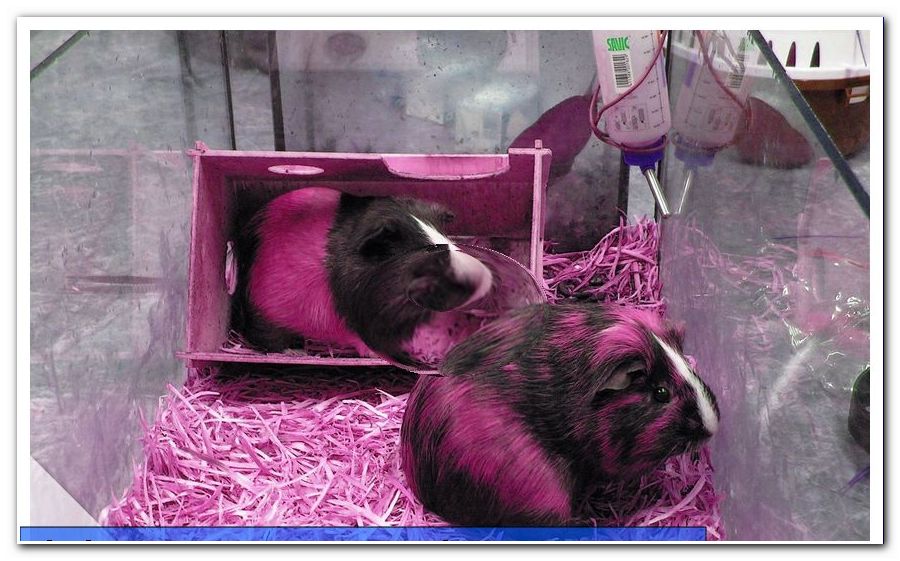Connecting the telephone socket - Instructions: Connecting a TAE socket

- Which TAE box to use "> Connect the telephone socket
- Connect AMS and TAE can
The connection of a TAE telephone socket for another telephone in the living room or in the bedroom is for many like a book with seven seals. However, an expensive specialist is not required to connect a TAE telephone socket. This guide shows how you can easily connect a TAE box yourself without any specialist knowledge and with little tools.
The telephone connection in a house or apartment consists of two components. These are the telephone connection, which is almost always in the basement and the first telephone socket in the apartment. The telephone connection and the first telephone socket are installed by the network operator and are his property. The phone line connects the phone line from the street to the house. As a rule, the terminal box for the house connection is sealed and must not be opened. From there, the telephone line goes to the first telephone socket. All other telephone sockets are connected behind this first TAE box. The following explanations for connecting a telephone socket are valid for wall-mounted telephone sockets and wall-mounted telephone sockets. However, the main point is the connection of a so-called flush-mounted TAE telephone socket in the wall. It is assumed that the telephone cable has already been laid to the installation site of the new telephone socket.
Which TAE box to use?
The abbreviation TAE stands for the term "telecommunications connection unit". TAE is a standard for connecting telephones, fax machines and other communication devices to the telephone network. This standard is used in addition to Germany in a few other countries of the EU.
With the TAE doses a distinction is made between TAE F and TAE N- coded sockets and plugs. The "F" stands for telephony. Phones are connected to these sockets in the telephone socket. The "N" stands for non-speaking. Here are answering machines; Fax machines, modem etc. connected.

The most common telephone sockets are F-coded sockets for connecting a telephone and NFN-coded sockets for connecting a telephone and up to two other devices.
The coding of the plugs and sockets prevents a telephone with an F-coded plug from being plugged into the N-coded socket. Conversely, a fax machine with an N-coded plug can not be plugged into the slot for a phone.
Tip: If a new telephone socket is to be installed, it is worthwhile to purchase a NFN coded socket. Thus, a fax machine or another device can be connected at a later time without replacing the can. An NFN telephone socket is available in specialized shops from about 3, - Euro.
If the thin wires of the telephone cable have to be stripped, we recommend using a wire stripper. The wires of a telephone cord are so thin that they can be severed in no time. With a wire stripper, depending on the model, the thickness of the wire can be set very precisely, or the appropriate diameter can be precisely determined by the imprint on the pliers. A wire stripper costs in the hardware store from about 7, - €. You can also use a stripper. If you have some experience in stripping thin cables, you can also use a sharp cutter if necessary.

If a phone is only to be installed in a new location, a simple telephone socket is enough. If one or more additional telephones are to be connected to a line, for example one in the living room and one in the bedroom, one needs in addition to the TAE box also a so-called automatic multiple switch. The multiple switch is abbreviated to AMS . The AMS is used like a telephone jack, but makes sure that two phones are working on one line. When an incoming call then ring both phones. On the phone that is picked up first, the call can be made. The second phone is deactivated and can not be used for monitoring. AMS costs in the specialized trade from approx. 20, - euro
You need this to connect a telephone socket:
- TAE box (F or NFN coded)
- Screwdriver blade width approx. 3 mm
- Screwdriver blade width approx. 6 mm
- Wire stripper or a cutter
- AMS (for connecting 2 or more phones)
Connect the telephone socket
When everything is ready, first unscrew the cover from the first TAE box. Then loosen the screws on the right and left of the insert with the bushes (do not unscrew the screws completely) and carefully pull the unit out of the wall a little bit. At the top of the insert are now 6 connections. These ports are numbered 1 to 6 from left to right.
Above the connections is a small black component mounted. This is the so-called passive test connection, short PPA . The PPA is used by the network operator to test the line remotely if there is a fault. The PPA must not be permanently removed. The attachment of the PPA to port 6 has no function and serves only for stabilization.

Ports 1 and 2 are assigned to the trunk. To fix the new wires, the PPA has to be removed shortly. Loosen the screws at the connections 1, 2 and 6 and then carefully pull out the PPA. In the connections 5 and 6 one wire of the telephone line is plugged to the new phone socket. If necessary, the wires must be stripped to a length of approx. 8 mm before they can be connected. The color of the wires should be noted.

Then replace the PPA in the connections and tighten all screws again slightly. Once the veins are firmly fixed, the can can be pushed back into place in the wall and screwed tight. Then the cover is screwed on again.
At the new box, the cover is first unscrewed. Also with this box there are 6 connections on the top side. In the connections 1 and 2, the wires connected in the first telephone socket at the squares 5 and 6 are then inserted and screwed. The position of the wires, so the polarity, does not matter. The wires can be reversed at the connection points, without that there will be problems.

The new telephone socket is now ready connected and can be fixed in the flush-mounted box or on the base plate (in the case of a surface-mounted box). If the cover or housing is screwed on, the TAE socket is ready for the connection of the phone.
Tip: In the case of a flush-mounted telephone socket, two claws are located on the right and left of the insert, with which the insert is clamped in the socket. To make it easier to install the insert, a rubber band can be placed around the back of the insert, which presses the two claws against the insert when the insert is pushed into the box in the wall.
Connect AMS and TAE can
The connection of an automatic multiple switch requires only an intermediate step compared to the connection of a simple TAE telephone socket. The AMS is installed between the first TAE socket and the other telephone socket.
As for connecting a single TAE socket, the two new cables are first connected to the connections 5 and 6 of the first TAE socket. The AMS is then installed in place of a standard telephone jack in place for the first phone. An AMS has a total of 8 ports at the top, which, from left to right, are labeled La-Lb-a1-b1-W-a2-b2-E. The two wires from the first telephone socket are connected to the terminals La and Lb of the AMS.

After the AMS, for example in the bedroom, then the TAE box is installed. The connection of the cables leading to this TAE socket takes place at the connections a2 and b2 of the AMS. This means that the second and third connections from the right are used by the AMS for the connection of the TAE socket. The connection on the far right of the AMS (E), however, remains unused.
These cables are in turn connected to the terminals 1 and 2 of the TAE box. Here, the wires from a2 to the AMS are connected to pin 1 of the TAE socket and b2 is plugged into pin 2. After tightening all the terminal screws and attaching the covers, installation is complete.
In order for both phones to work in this installation, the first phone connects to the AMS and the second phone to the new phone jack. The first telephone socket remains free.
Tip: If new teletone cables are to be laid on the wall, the use of screwed cable clamps is recommended. The effort for the attachment is a bit higher, but the durability is much better than with nailed cable clamps.




